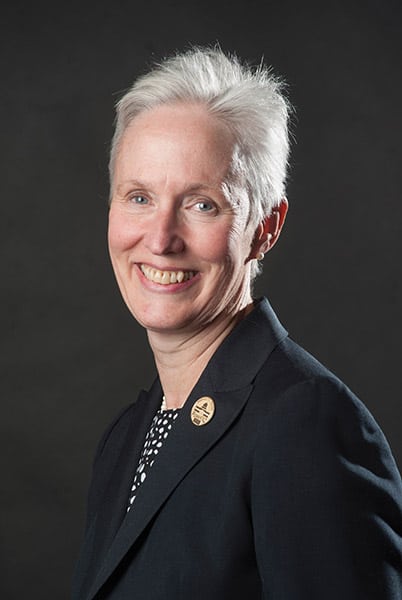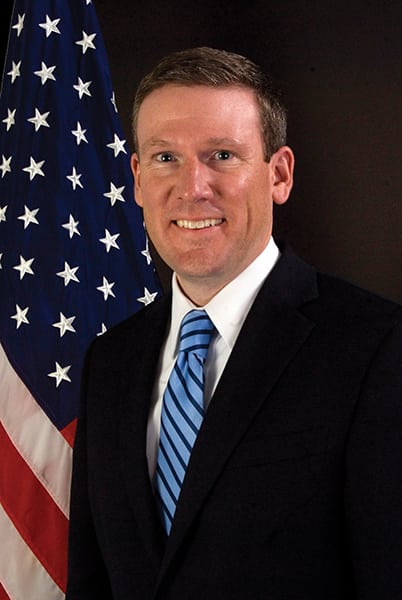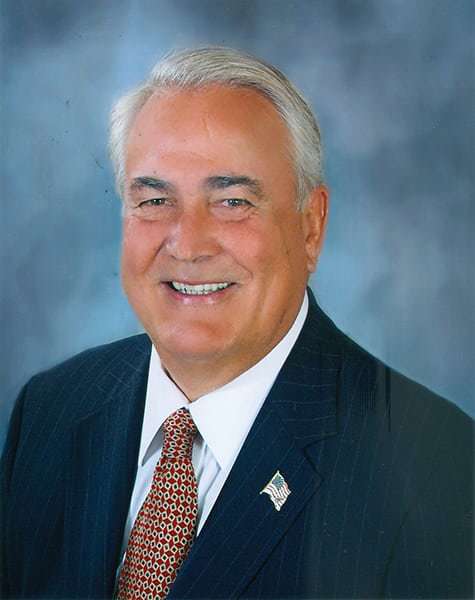U.S. Electric Markets in Transition
The U.S. market for electricity is trifurcated. More than half the country is served by competitive generators bidding against each other in wholesale markets. Almost half is served by conventional state-regulated, vertically integrated utilities controlling generation and transmission. The rest, a much smaller portion, consists of government-owned and customer-owned utilities, some of which are generators and most of which serve retail customers. All categories are in transition.
In October 2016, the Public Utilities Commission of Ohio (PUCO) offered Akron-based FirstEnergy a five-year, $600 million subsidy to be paid by the utility’s customers. The move was designed to compensate for the investor-owned utility’s (IOU’s) large, baseload coal and nuclear plants’ inability to compete in the PJM competitive wholesale market against low-cost natural gas.
Consumer groups slammed the PUCO order as “corporate welfare.” Tony Addison of AARP said the PUCO decision means that “Ohioans should subsidize the failing business model of FirstEnergy.” This, Addison said, “creates a terrible precedent by PUCO and others to bailout companies threatening to leave the state, on the backs of the people that work hard and pay their bills every month.”
FirstEnergy was not satisfied. Within weeks, the company announced it was putting its baseload generating plants, with a combined capacity of over 13 GW, including coal and nuclear units, on the auction block. President and CEO Charles E. Jones said, “We have made our decision that over the next 12 to 18 months we’re going to exit competitive generation and become a fully regulated company.”
A month earlier, responding to the same market forces, Columbus-based American Electric Power (AEP) sold four Midwestern gas- and coal-fired power plants, totaling 5.2 GW of capacity, to an independent power joint venture of Blackstone and ArchLight Capital Partners for over $2 billion. (For more on the flurry of mergers and acquisitions in 2016, see “A 2016 Roundup of Power Sector Wheeling, Dealing, and Repositioning” in this issue.) The company took a $2.3 billion writedown as part of the deal. The sale represents AEP’s move—like FirstEnergy’s—to exit PJM’s competitive wholesale markets, retreating to conventional, cost-of-service regulation that characterized the U.S. electric markets before the restructuring of the 1990s.
AEP was frank about its motives in selling off major generation. President and CEO Nick Akins said, “AEP’s long-term strategy has been to become a fully regulated, premium energy company focused on investment in infrastructure and the energy innovations that our customers want and need. This transaction advances that strategy and reduces some of the business risks associated with operating competitive generating assets.”
A similar dynamic is playing out in Illinois, where the nuclear behemoth Exelon sought, and in early December won, state subsidies to keep several of its nuclear plants generating electricity in the face of their inability to compete in competitive markets. And in New York, Gov. Andrew Cuomo proposed a plan—opposed by consumer and environmental activists and nonutility generators—to subsidize four units at three uneconomic nuclear plants (two currently owned by Exelon) that bid into the New York Independent System Operator’s (NYISO’s) competitive market.
Two years ago, Duke Energy said it would move away from organized competitive markets, with 11 of the company’s 13 generating plants selling power in the PJM market, the largest independent wholesale market.
Do these events represent an existential threat to the structure for market competition in electricity that the Federal Energy Regulatory Commission (FERC) created in the mid-1990s? Former FERC Commissioner Tony Clark (Figure 1), a Republican North Dakota electricity regulator before his FERC appointment, told POWER that the Midwestern retreat from competitive markets is a case of “political buyers’ remorse” among the utilities with expensive power generation. He said, “It’s not clear to me if it is viable to live halfway between” competitive electric markets and regulated markets.
What’s happening in PJM, Clark said, is a case of “the market doing what markets do” by shunning uncompetitive supplies. But the move by some high-cost utilities to escape the market is “creating real tension” among the nation’s electric markets and its regulators, he said.
Getting More Organized
At the other end of the country, the California Independent System Operator (CAISO), the first independent system operator formed after FERC’s 1996 landmark Order 888, presents a contrast to the PJM events. CAISO is thriving and attracting new entrants into the competitive marketplace.
CAISO two years ago developed a sibling energy imbalance market to bring economic dispatch to a wider western U.S. market. The new market could prove to be the first step toward a full-scale independent system operator for the vast region.
As CAISO describes it, the imbalance market “is a real-time, wholesale power market managed by the ISO that enables participating utilities to buy low cost energy available across eight western states, including California, Oregon, Washington, Utah, Idaho, Wyoming, Nevada and Arizona. The efficiencies created by pooling resources across a wide geographic area provide cost savings and environmental benefits.” In a news release in October, CAISO calculated “the total benefits since the western regional market was launched in 2014 to $114.35 million.”
As a result of the success of CAISO’s imbalance market, additional participants are likely to join. Early last October, Arizona Public Service and Puget Sound Energy in Washington state said they will join the new market. Within two weeks, the Balancing Authority of Northern California, a public power transmission operator, and the Sacramento Municipal Utility District, a large public power system, said they also plan to join. At the same time, Mexico grid operator El Centro Nacional do Control de Energia said it is exploring participation with CAISO for the Baja California Norte grid.
In the U.S., electric markets come in three models: wholesale competitive markets such as PJM and CAISO; legacy state-regulated monopoly markets individually governed by regulatory commissions either appointed or elected; and public power systems, such as the Tennessee Valley Authority and Bonneville Power Administration, owned by governments or their consumers.
According to the Energy Information Administration, more than 60% of electricity in the U.S. moves through the competitive wholesale markets such as PJM, the Midcontinent Independent System Operator (MISO), NYISO, the New England Independent System Operator, the Southwest Power Pool, the Electric Reliability Council of Texas, and CAISO. The remainder of the transactions largely occur in state-regulated markets, most in the deep south and parts of the Rocky Mountain West and Pacific Northwest (see the map at the top of this story).
The competitive markets appear to be working well from the standpoint of consumer value. Frederick S. (“Stu”) Bresler, PJM senior vice president (Figure 2), told POWER in a recent interview that PJM’s sometimes controversial capacity markets “have been very successful in attracting investments and efficient retirements.” In the energy markets, he said, “prices have been very low,” thanks to natural gas from shale deposits, and the market is “doing the job markets were intended to do.”
Status Quo States
On the other hand, legacy state-regulated monopoly markets continue to thrive. In Georgia, for example, the state’s dominant utility, Atlanta-based Southern Co., is well on the way to delivering the nation’s first truly new nuclear units at its existing Vogtle station. Scana Corp. in South Carolina has a similar two-unit project at the Summer station. It’s unlikely that either of those projects could be built in a state where competitive generation was the rule.
Long-time Georgia Public Service Commission regulator Lauren (“Bubba”) McDonald Jr. (Figure 3) told POWER that state regulation of the dominant vertically integrated monopoly Southern Co. is working well for the Peach State and its consumers. “From Georgia’s perspective, our system is well under control,” he said. “It serves our people without any interruptions, and we continue to build to take care of future needs. I don’t see any need for deregulation to make things change.”
He warned the western U.S. to “take some notes” from the East, observing in the wake of events in the Midwest that “we have been very successful” in the South. He said he views what’s happening in Ohio and the Midwest as “a move away from the organized markets.”
McDonald, a Republican (as are all of the Georgia utility regulators) and the first statewide elected official to endorse Donald Trump for president, last July moved against allowing Southern Co. to recover $175 million in costs for examining another new nuclear project. He failed to get a second for his motion. McDonald then offered a plan to triple the state’s renewable energy target to 1,700 MW. That failed by a 3-2 vote, with commissioner Tim Echols siding with McDonald. Echols easily won reelection to the commission in the November election.
Vertically integrated IOUs are generally quite comfortable with the legacy of Thomas Edison and Samuel Insull. Their system, with roots a century deep, provides the companies with considerable certainty and comfort. It is no surprise that the only new nuclear plants being built in the U.S. are in Georgia and South Carolina, bastions of the once-dominant form of state monopoly regulation. Both states provide mechanisms for the companies building the plants to earn a return on their investments during construction—something that is impossible in a competitive market.
Public Power Caught in the Middle
Caught in the middle are the public power systems, municipal and cooperative utilities, which serve a seventh of all electricity consumers in the U.S. and some of the largest cities, such as Los Angeles, Jacksonville, and Memphis. Most serve small communities of fewer than 10,000 people.
Sue Kelly, CEO of the American Public Power Association (APPA, Figure 4), described in congressional testimony how the munis and co-ops are caught betwixt and between the regional transmission organizations (RTOs) and the utility monopolies. “We have expressed concerns over the past 10 years about the structured wholesale electric markets,” she told the House Energy and Commerce Committee in June 2015. “Many of APPA’s members must face the day-to-day complexity and costs of operating in these markets.”
 |
|
4. Sue Kelly. The CEO of the American Public Power Association told POWER that APPA’s concern is mostly with capacity markets, which “are often inconsistent with our business model.” Courtesy: APPA |
Kelly added, “Public power utilities operating in these markets are located within the boundaries of the RTOs’ footprints. They are usually embedded in the transmission systems of larger investor-owned utilities that have made the choice to participate in a particular RTO (and even sometimes to change RTOs). Hence, while public power utilities’ participation in these markets may in theory be ‘voluntary,’ in practice it is not. With their participation effectively mandated and the RTO stakeholder processes in most regions heavily skewed toward the interests of large transmission and generation asset owners, many public power utilities’ only choice is to work closely with Congress and FERC to seek needed reforms.”
Kelly told POWER that APPA’s concern is mostly about capacity markets, where the RTO pays generators that meet its reliability criteria in order to be sure they can be called upon in a crunch. The ways the capacity markets work, she said, “are often inconsistent with our business model.” Public power systems “retain the obligation to serve, do resource planning,” and other utility functions, and RTO capacity markets can interfere with those requirements.
“We are not RTO haters,” she said. But the munis and co-ops object to RTO policies that impact the utilities’ ability to plan for their own needs.
Kelly cited a situation in Ohio, where Columbus-based American Municipal Power (AMP) has developed run-of-river hydro to meet its own needs and partially supplant power it was buying from FirstEnergy. At that time, AMP was located half in MISO, which did not have a capacity market, and half in PJM, which does. “When FirstEnergy picked up and went entirely into PJM, that forced AMP to go with them,” Kelly said. Run-of-river projects don’t meet PJM’s capacity criteria, she noted, so AMP is not going to be paid for the capacity value of its hydro, after spending millions of dollars trying to meet the PJM rules.
Former Commissioner Clark, who left FERC last fall and will be joining Washington law firm Wilkinson Barker Knauer LLP as a senior advisor in January, told POWER, “Public power systems in restructured markets are surrounded by a lot of generators, and they become the outliers. I’ve heard a lot of those concerns. I’ve heard APPA loud and clear.” APPA, he said, has worked to try to create off-ramps. He thinks it can be done, although he acknowledged that it is a tough, complicated challenge.
How We Got Here
Before the mid-1990s, almost all electric markets were conventional state-regulated monopolies, a product of the late 19th- and early 20th-century model advanced by Edison and his business scion and former secretary, Insull. That model began to change, starting with the 1978 Public Utility Regulatory Policies Act (PURPA), which recognized that electric generation was not a natural monopoly. PURPA, and a substantial glut of natural gas, led to the emergence of non-utility generating companies selling power to conventional utilities under power purchase agreements. Companies such as AES and NRG were born.
Congress passed comprehensive energy legislation in 1992 that cleared the way for FERC to establish even more competitive generating markets. FERC issued landmark Order 888 in 1996, and Order 889 shortly after. The TransMissives blog of Oregon energy lawyer Adrienne Thompson commented recently, “FERC Orders 888 and 889 played an instrumental role in opening up the U.S. electricity system to generator competition and wider transmission access. By the mid 1990’s it had become well known that vertically-integrated utilities—the owners of most of the transmission lines in the U.S.—were stifling competition and letting excess grid capacity go unused. FERC initially encouraged utilities to grant transmission service requests on a case-by-case basis. Utilities responded with delay and reluctance, and in some cases, with discriminatory service, terms, and conditions. Eventually the Commission initiated rulemakings and Orders 888 and 889 resulted: the former requiring that utilities unbundle their generation functions and provide open access to their transmission facilities, and the latter establishing the Open Access Same-Time Information System (OASIS) and setting standards for how utilities and customers would come to share information about the transmission system. These Orders and the concept of ‘open access’ have since become deeply engrained in the regulatory framework.”
Where Do Markets Go from Here?
What does the future hold? Will the current divided system continue, or will the Midwest retreat spread in a wave of reregulation?
That question can’t be answered at this point, and it may depend on what happens in Ohio, Illinois, and New York. PJM’s Bresler points out that IOUs have obligations to their shareholders that their uncompetitive coal and nuclear plants are undercutting. But subsidies are not the way to go, he argues, because they distort the competitive markets, putting a taxpayer thumb on the scale that displays prices. “If subsidies start to proliferate,” he says, “that’s a danger” to the markets.
Outright sales of plants, as FirstEnergy and AEP are now pursuing, provides a way for the companies to get out from under their uneconomic assets without distorting the competitive markets. Buyers, who will be able to buy the plants for bargain prices, could be in a position to bid competitively. Bresler says PJM’s market and the region’s consumers have benefitted greatly from the rise of shale gas. “We were so overweight in coal, and now there is a better balance” between coal and natural gas.
Ultimately, the shape of the market in the years ahead may end up in the hands of the federal regulators. That’s most likely if state subsidies of bidders into wholesale markets become widespread, as FERC has authority to ensure that the wholesale markets are competitive.
FERC has already ruled that states cannot subsidize new generation aimed at the wholesale markets. In 2011, Maryland feared that closures of baseload coal plants in the PJM market would lead to energy shortages. So the state contracted for a 650-MW gas-fired generator, with a state-guaranteed rate to ensure that the plant would be competitive in the PJM capacity auction. New Jersey was moving in the same direction. FERC rejected the plan, concluding that Maryland’s plan would artificially suppress market prices and was counter to FERC’s authority to regulate wholesale markets.
Last April, in Hughes v. Talen Energy Marketing, the U.S. Supreme Court ruled against Maryland by 8-0. Justice Ruth Bader Ginsberg in the court opinion wrote, “Maryland’s regulatory program to encourage development of new in-state energy generation is preempted by the Federal Power Act, which vests in the Federal Energy Regulatory Commission exclusive jurisdiction over interstate wholesale electricity rates.”
The Hughes decision upheld FERC’s authority to reject state subsidies for new generation. Whether the commission will apply that reasoning to subsidies for existing generation is unclear, although the direction of the courts seems to favor FERC. An early test could come in New York, where Gov. Andrew Cuomo has offered state subsidies to prevent the closure of three upstate nuclear plants, which are currently priced out of the NYISO market because of low natural gas prices. Among the reasons he cited for the bailout is the currently un-priced value of carbon dioxide emissions the nuclear plants prevent.
In late October, a group of non-utility generators including Dynegy, NRG Energy, and the Electric Power Supply Association challenged the Cuomo plan. Citing Hughes, the group filed suit in Manhattan’s federal district court, charging that the New York subsidies will prop up the nuclear plants at the expense of the federally regulated wholesale markets. Lawyer Jonathan Schiller, representing the generators, said, “This is illegal. It interferes with the Federal Energy Regulatory Commission’s jurisdiction in regulating wholesale electric rates, and also because the measure unlawfully interferes with interstate commerce.”
The suit says, “Unless enjoined or eliminated, these credits will result in New York’s captive ratepayers paying the owners an estimated $7.6 billion over 12 years.”
Audrey Zibelman, Cuomo’s chairman of the New York Public Service Commission, in a written statement said the lawsuit is “frivolous” and is “right out of the fossil fuel industry’s playbook to deny and thwart actions to combat climate change.” When he announced the plan last summer, Cuomo focused on the local economic damage that closing the nukes could create. Speaking specifically of the FitzPatrick Nuclear Plant, Cuomo said, “I believe if FitzPatrick is closed, it would be a financial crisis for the entire region,” costing an estimated $500 million in lost wages and taxes.
In October, a team consisting of analysts from Duke University, the University of North Carolina, and Harvard Law School issued a paper looking at electric market issues facing the next federal administration, regardless of the winner of November’s election. Their report, “Illuminating the Energy Policy Agenda: Electricity Sector Issues Facing the Next Administration,” said, “The line between federal and state jurisdiction over the electricity sector is shifting. FERC once played a limited role in sector oversight, but regionalization of the electric grid and development of interstate markets for electricity, electric capacity, and transmission development have expanded its responsibilities…. Despite three Supreme Court decisions in the past two years regarding state and federal jurisdiction over energy regulation, tensions between state and federal policies are likely to continue.” ■
Read more about electricity markets in transition in POWER’s exclusive series:U.S. Electric Markets in Transition (January 2017)Duck Hunting at the California Independent System Operator (March 2017)New York’s Ambitious Transitions: Who Wins? Who Loses? Who Knows? (May 2017)MISO: Avoiding the Mess Facing Other Wholesale Competitive Electric Markets (July 2017)Could Success Spoil ISO-NE? (September 2017) |
—Kennedy Maize is a long-time energy journalist and frequent contributor to POWER.



